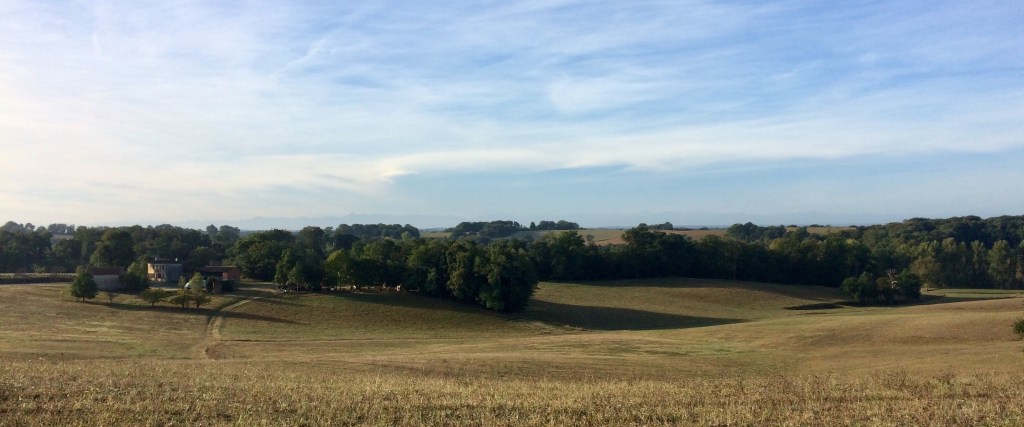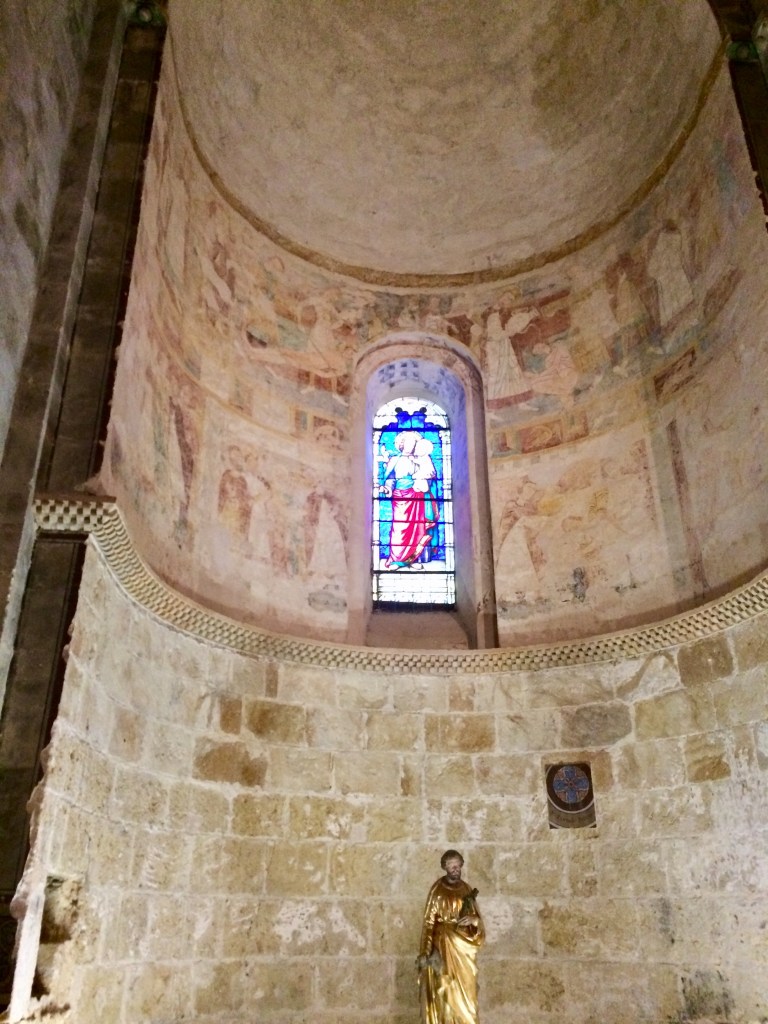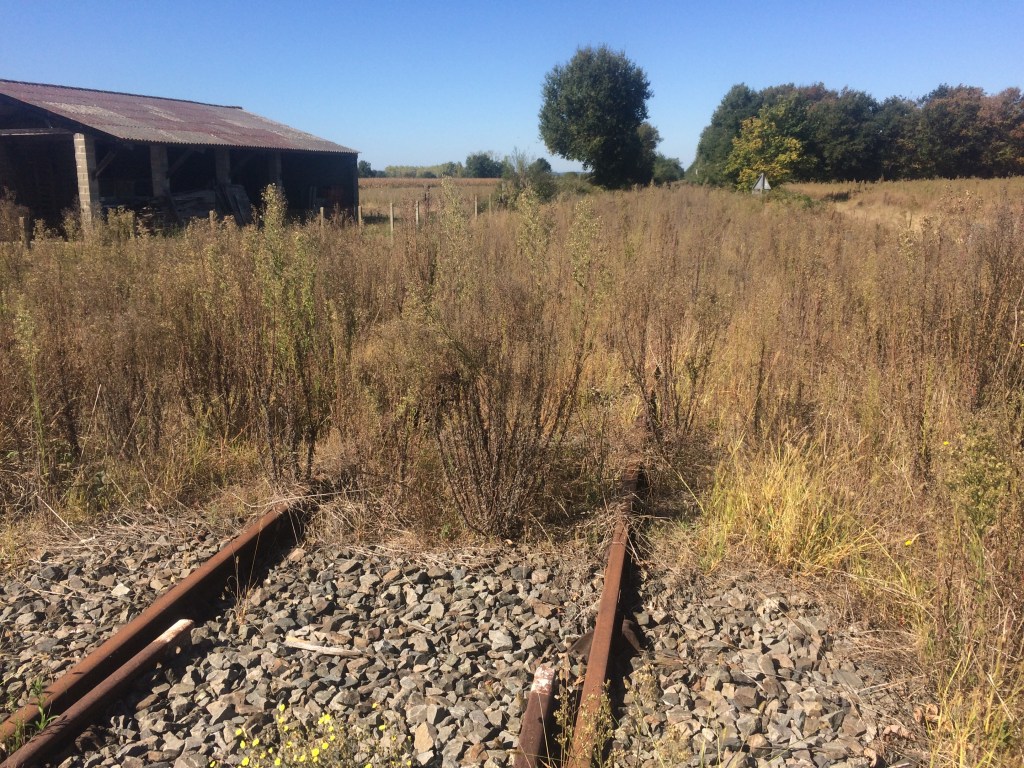By heading out in the mornings at first light I was continually amazed at some of the sights that I witnessed. On one occasion it was an early morning duck parade (pictured below), where the ducks that had been housed in farm sheds overnight were being let out to go and graze in nearby fields for the day. There was this orderly procession of ducks heading down a path from the shed towards the nearby fields. However in the process of obtaining some photos I was unfortunate enough to be zapped by the electric fence! I had not noticed the signs!!! Ouch ….

There were acres and acres of maize fields either waiting to be harvested, being harvested or already harvested. So this meant that I had to watch out for large farm vehicles. In fact some of the combine harvesters were enormous!! Also when walking by the fields where there was a harvester in action I learnt to wait until the harvester headed away from the part of the field alongside which I was about to walk. Why? Well there were bits of maize that were being flicked out of the harvester by the breeze and I did not want dust in my eyes etc.

Cats continued to be a feature in some places. I had one visit my bedroom one evening at one place where I stayed and it was not uncommon to see cats either in the morning or in the evening if they were living at the accomodation where I was staying. Of course every town had an old church with its own significant history. For example the Eglise Collegiale Saint Nicolas in Nogaro had been used as a coal bunker during the French Revolution (you can still see the stains on the interior walls in places).

Every now and then I came across some more medieval architecture out in the countryside. The following example is of some well preserved medieval farm buildings with a Gite also now being present on this particular site.

As a reminder of how rural France has changed with time, there was one part of the trail where I spent some time walking near abandoned railway lines. As it had not rained for a couple of months in this part of France, the vegetation was beginning to look quite parched in areas. However there were intermittent patches of woodland (useful to shelter out of the sun), along with more vineyards.

I can remember getting lost in Aire Sur L’Adour because the central historic part consists of a maze of narrow streets. So there I am holding a map standing beside a road, when a middle aged Frenchman drives up, slows down, winds down his car window and asks me if I am lost? I am not completely lost but I do need some assistance to find where my accommodation is actually located. I receive some instructions and off I set. Just another example of the help I received along the way usually from complete strangers!

One other thing about rural France is the feel of the breakfast room with there being a range of both impressive kitchen ware and various effigies of poultry often on display.

To be continued- Tales From the Via Podiensis – j) Passing through Les Landes and first glimpse of the Pyrenees